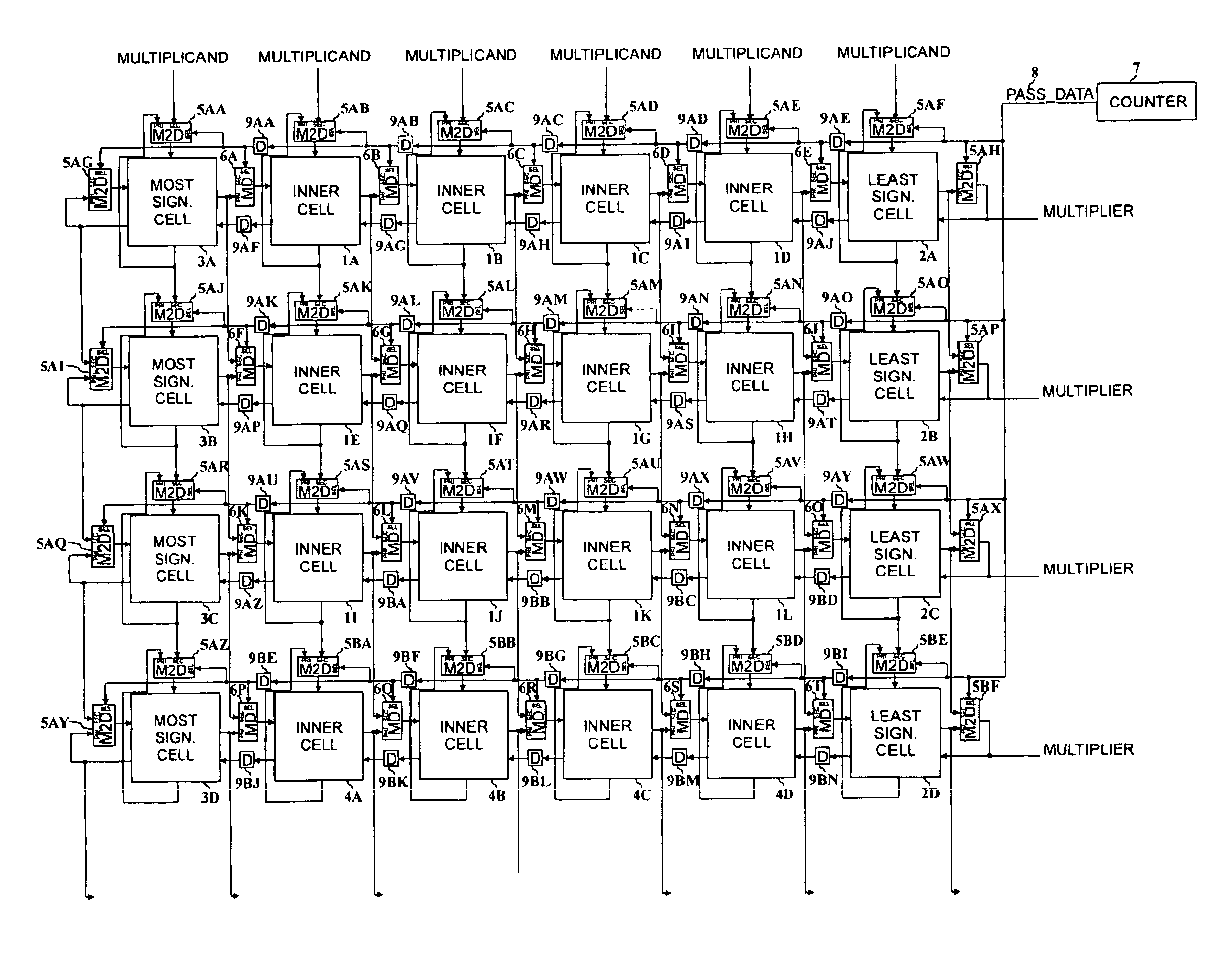Fast parallel cascaded array modular multiplier
a cascaded array and modular multiplier technology, applied in the field of digital signal processing, can solve the problems of slow hardware approach to modular multiplication, limited success in scaling beyond the level of a single linear array, and performance scale only logarithmically with respect, so as to achieve optimal systolic clock rate, fast parallel processing of modular multiplication, and reduced number of internal signal buses in the integrated circuit implementation
- Summary
- Abstract
- Description
- Claims
- Application Information
AI Technical Summary
Benefits of technology
Problems solved by technology
Method used
Image
Examples
Embodiment Construction
[0018]The preferred embodiment is delineated in FIG. 1. It consists of a cascade of K linear systolic arrays of bit-wise processing cells, where K is chosen according to the amount of integrated circuit area available for the implementation. The value of K directly relates to the amount of parallelism implemented in the system. Each array is composed of N+1 cells, where N represents the word length of the modulus value in bits.
[0019]Each cell possesses a set of bit-wise inputs corresponding to the multiplicand, multiplier, modular correction, modular selection, partial sum, and two previous carry signals. Each cell also possesses a set of bit-wise outputs corresponding to the multiplicand, multiplier, modular correction, modular selection, generated partial sum, and two generated carry signals. Each inner cell 1 excluding the leftmost and rightmost peripheral cells in each array and all cells in the bottommost array, is interconnected within the structure in the following manner. Th...
PUM
 Login to View More
Login to View More Abstract
Description
Claims
Application Information
 Login to View More
Login to View More - R&D
- Intellectual Property
- Life Sciences
- Materials
- Tech Scout
- Unparalleled Data Quality
- Higher Quality Content
- 60% Fewer Hallucinations
Browse by: Latest US Patents, China's latest patents, Technical Efficacy Thesaurus, Application Domain, Technology Topic, Popular Technical Reports.
© 2025 PatSnap. All rights reserved.Legal|Privacy policy|Modern Slavery Act Transparency Statement|Sitemap|About US| Contact US: help@patsnap.com


